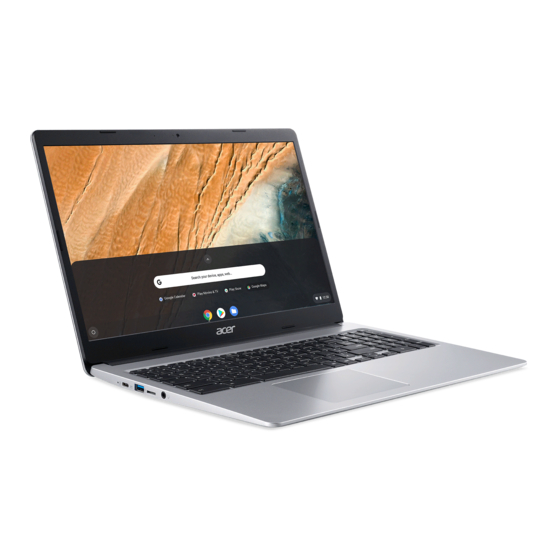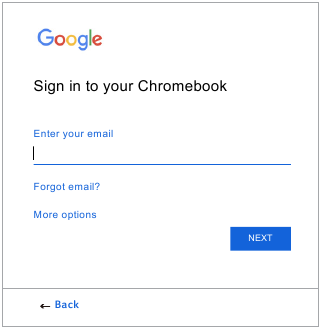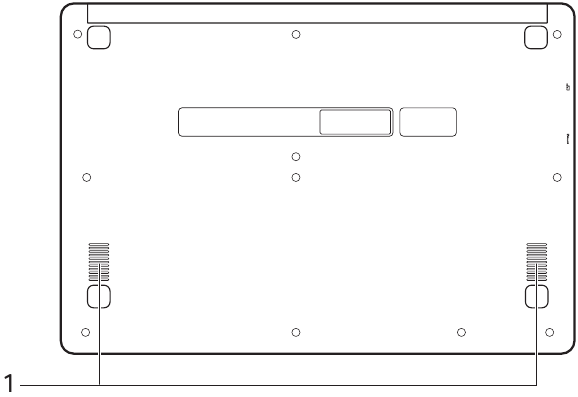
Acer Chromebook 315 Laptop Manual
- User manual (32 pages) ,
- Manual (10 pages) ,
- User manual (12 pages)
Advertisement

ENVIRONMENT
Temperature:
- Operating: 5°C to 35°C
- Storage: -20°C to 60°C
Humidity (non-condensing):
- Operating: 20% to 80%
- Storage: 20% to 60%
Getting started
Turn on your Chromebook
On the Chromebook keyboard, press the power button located at the top edge next to the page up key. A "Welcome" screen will appear when the Chromebook first boots up.
Select your language settings
Use the "Language" drop-down list to choose your default language setting. If there is more than one way to type in your language, you may be prompted to select a keyboard input method as well.
Connect to a network
Select a network from the "Connect to network" list to connect to the Internet. If network access is protected, you will need an access password to connect to it.
Accept the Terms of Service
Once connected to a network, accept the Terms of Service. Your Chromebook will then download any available system updates, so you automatically get the latest Chrome OS features.
First-time sign-in
Create a new Google™ Account
You can create a new Google Account if you don't already have one. Select Create a Google Account to set up a new account. A Google Account gives you access to useful web services developed by Google, such as Gmail, Google Drive, and Google Calendar.
Browse as a guest
You can also use the Chromebook without a Google Account by selecting Browse as a Guest.
Sign in to your Google Account
If you already have a Google Account, enter your username and password in the sign-in box that appears and select the Sign in button.

Sign in with your primary Google Account. This account will be set as the owner and is the only account that will be able to change certain Chrome settings.
Your Acer Chromebook tour
Now that you are done setting it up, let us show you around your new Acer Chromebook.
Front view

| # | Icon | Item | Description |
| 1 | Microphone | Internal microphone for sound recording. | |
| 2 | Touchscreen | Displays computer output, supports multi-touch input. | |
| 3 | Webcam | Web camera for video communication. A light next to the webcam indicates that the webcam is active. |
Keyboard view

| # | Icon | Item | Description |
| 1 | Keyboard | For entering data into your computer. | |
| 2 | Touchpad / click button | Touch-sensitive pointing device which functions like a computer mouse. Pressing down anywhere on the pad functions like the left button of a mouse. Pressing down anywhere with two fingers functions like the right button of a mouse. | |
| 3 |  | Power button | Turns the computer on or off. |
| 4 | Numeric keypad | A separate keypad for numeric data entry. |
Function keys
The computer uses function keys or key combinations to access some hardware and software controls, such as screen brightness and volume. The dedicated function keys each have a specific function.
| Icon | Function | Description |
 | Previous | Go to the previous page. |
 | Next | Go to the next page. |
 | Reload | Reload the current page. |
 | Full-screen | Open the page in full-screen mode. |
 | Next window | Switch to the next window. |
 | Brightness down | Decreases the screen brightness. |
 | Brightness up | Increases the screen brightness. |
 | Mute | Turns off audio output. |
 | Volume down | Decreases the volume. |
 | Volume up | Increases the volume. |
 | Search | Search from the Apps panel. |
Touchpad
The built-in touchpad is a pointing device that senses movement on its surface. This means the cursor responds as you move your fingers across the surface of the touchpad.
| Action | Gesture |
| Click | Press down on any part of the touchpad. |
| Two-finger tap (or altclick) | Tapping the touchpad with two fingers or pressing (and holding) Alt on the keyboard and tapping the touchpad with one finger both equal a "right-click" on a computer mouse. |
| Two-finger swipe | Place two fingers on the touchpad and move them up and down to scroll vertically, left and right to scroll horizontally. |
| Drag and drop | Select the item you want to move with one finger. With a second finger, move the item. Release both fingers to drop the item. (This gesture works for files, not windows or icons.) |
Left view

| # | Icon | Item | Description |
| 1 |  | Battery indicator | Indicates the computer's battery status. Charging: The light shows amber when the battery is charging. Fully charged: The light shows blue when in AC mode. |
| 2 |  | USB Type-C port with DC-in | Connects to the provided USB Type-C power adapter and to USB devices with a USB Type-C connector. Supports DisplayPort™ over USB-C™. |
| 3 |  | USB port | Connects to USB devices. |
| 4 |  | MicroSD card slot | Insert a microSD card into this slot. |
| 5 |  | Headset / speaker jack | Connects to audio devices (e.g., speakers, headphones), or a headset with microphone. |
Right view

| # | Icon | Item | Description |
| 1 |  | USB port | Connects to USB devices. |
| 2 |  | USB Type-C port with DC-in | Connects to the provided USB Type-C power adapter and to USB devices with a USB Type-C connector. Supports DisplayPort™ over USB-C™. |
| 3 |  | Kensington lock slot | Connects to a Kensington-compatible security lock. |
USB 3.1 Gen 1 information
- USB 3.1 Gen 1 compatible ports are blue.
- Compatible with USB 3.1 Gen 1 and earlier devices.
- For optimal performance, use USB 3.1 Gen 1-certified devices.
- Defined by the USB 3.1 Gen 1 specification (SuperSpeed USB).
USB Type-C information
- USB 3.1 Gen 1 with transfer speeds up to 5 Gbps.
- Supports DisplayPort™ audio/video output.
- Delivers up to 3 A at 5 V DC for USB charging.
- DC-in: requires power adapter or power source providing 45 W at 12/18~20 V. For optimal performance, please use a certified Acer power adapter or USB Power Delivery device.
Bottom view

| # | Icon | Item | Description |
| 1 | Speakers | Deliver stereo audio output. |
© 2019. All Rights Reserved.
VideosAcer Chromebook 315 Review Video
Documents / ResourcesDownload manual
Here you can download full pdf version of manual, it may contain additional safety instructions, warranty information, FCC rules, etc.
Advertisement





















Need help?
Do you have a question about the Chromebook 315 and is the answer not in the manual?
Questions and answers